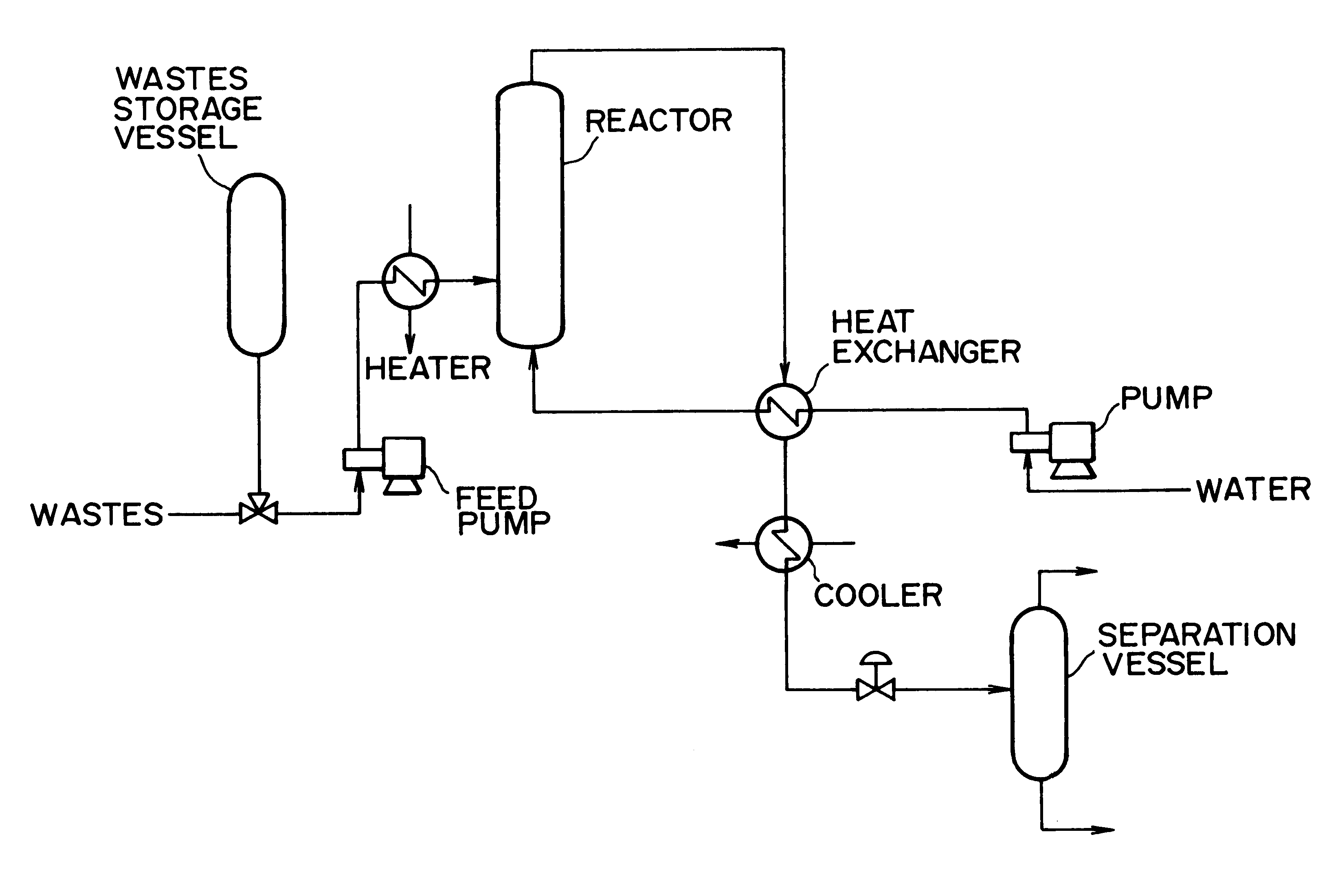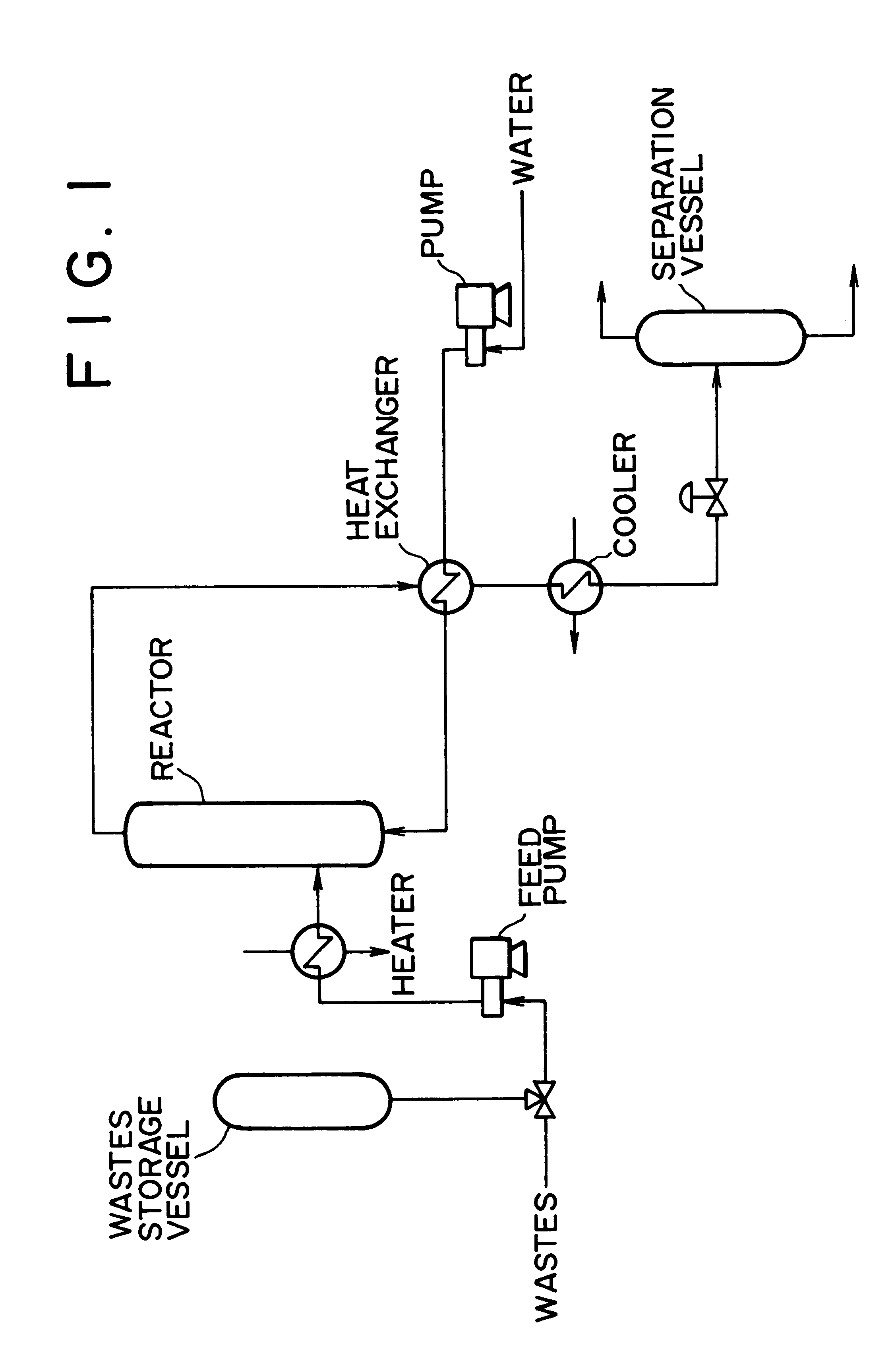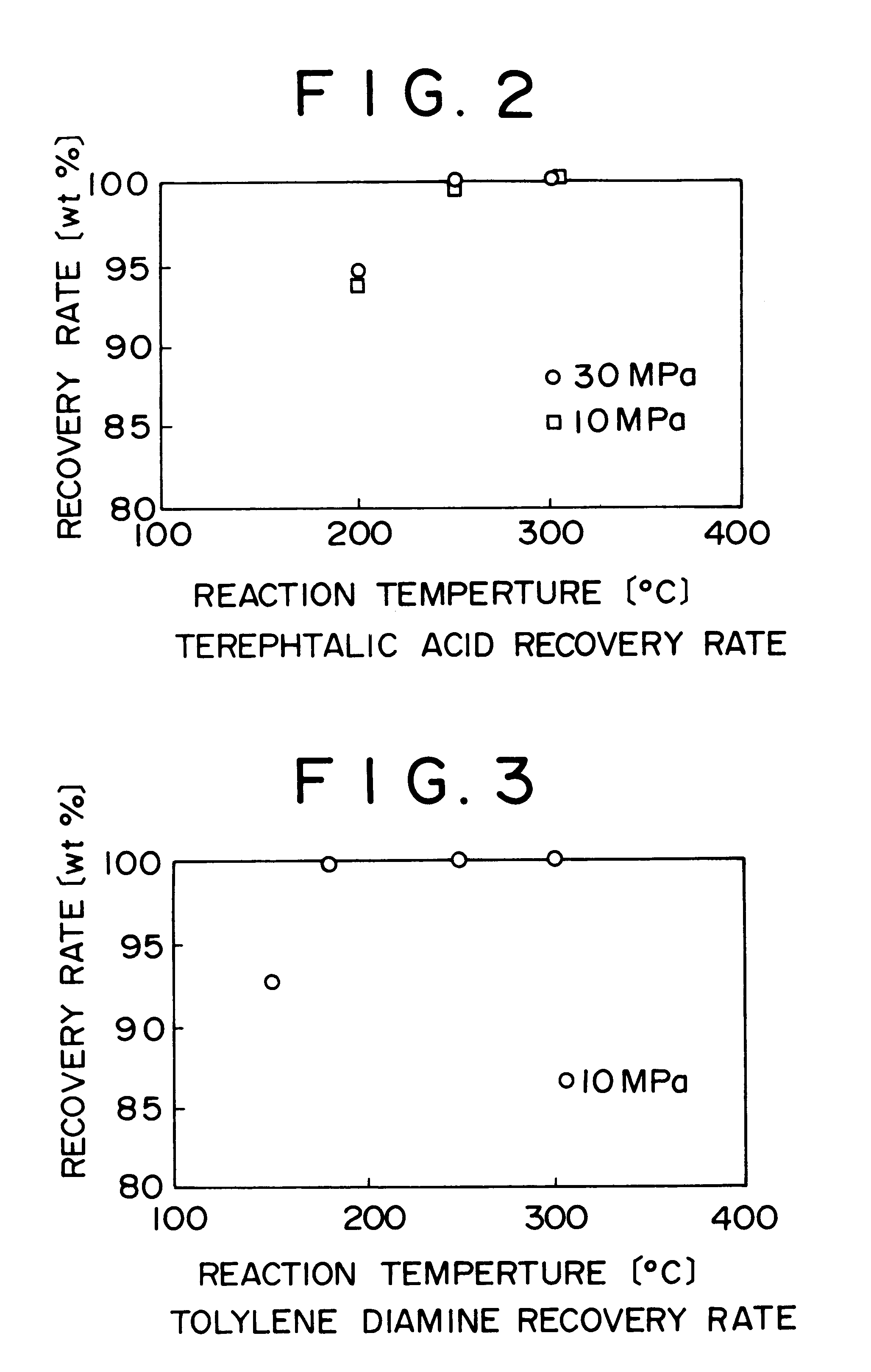Method of and apparatus for decomposing wastes
a waste and equipment technology, applied in the field of waste decomposition methods and equipment, can solve the problems of ineffective utilization, incineration or discarding of oligomers, and worsening of properties, and achieve the effect of effective use in actual operation
- Summary
- Abstract
- Description
- Claims
- Application Information
AI Technical Summary
Benefits of technology
Problems solved by technology
Method used
Image
Examples
example 1
A decomposition treatment for PET oligomers by-produced in a chemical plant for producing polyethylene terephthalate (PET) was conducted under the conditions shown in Table 1. Products formed by the decomposition are terephthalic acid and ethylene glycol. Table 1 and FIG. 2 show the recovery rate of terephthalic acid in each of experiments. The recovery rate is given on the basis of weight percent of the recovered terephthalic acid to the weight of the resultant terephthalic acid calculated theoretically from the weight of the charged PET oligomers. As can be seen from FIG. 2, 100% recovery rate was obtained at a temperature higher than 250.degree. C. under both of pressures at 10 MPa and 30 MPa.
example 2
An experiment for the recovery of tolylene diamine as an intermediate material for TDI was conducted by using distillation residues discarded in a chemical plant for the synthesis of tolylene diisocyanate (TDI). Experimental conditions are shown in Table 2. The contents of the distillation residues are 40 wt % of TDI, 20 wt % of TDI dimer and 40 wt % of TDI trimer. The distillation residues contain a great amount of TDI as the aimed compound, because the oligomers and TDI are less separatable by distillation. However, since TDI is also decomposed into tolylene diamine, all of the decomposing products (diamine compounds) obtained can be utilized again as the intermediate material for the process for the isocyanate synthesis process.
Table 2 and FIG. 3 show the recovery rate of tolylene diamine in each of the experiments. The recovery rate is based on the weight percent of the recovered tolylene diamine to the weight of the resultant tolylene diamine theoretically calculated based on t...
PUM
| Property | Measurement | Unit |
|---|---|---|
| pressure | aaaaa | aaaaa |
| temperature | aaaaa | aaaaa |
| pressure | aaaaa | aaaaa |
Abstract
Description
Claims
Application Information
 Login to View More
Login to View More - R&D
- Intellectual Property
- Life Sciences
- Materials
- Tech Scout
- Unparalleled Data Quality
- Higher Quality Content
- 60% Fewer Hallucinations
Browse by: Latest US Patents, China's latest patents, Technical Efficacy Thesaurus, Application Domain, Technology Topic, Popular Technical Reports.
© 2025 PatSnap. All rights reserved.Legal|Privacy policy|Modern Slavery Act Transparency Statement|Sitemap|About US| Contact US: help@patsnap.com



